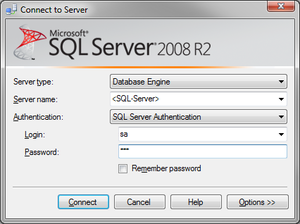Difference between revisions of "HowTo:Install UBIK Database"
(→See also) |
(→Requirements) |
||
| Line 15: | Line 15: | ||
== Requirements == | == Requirements == | ||
| − | + | === Database user === | |
| − | * | + | The database user configured for connecting {{UBIK}} Studio to the database needs |
| − | + | * to have the role ''sys.admin'' assigned | |
| + | * to be marked as ''Database owner'' (dbo) of the according {{UBIK}} database | ||
| + | |||
| + | === Windows firewall === | ||
| + | Make sure that the SQL server port, default 1433, is unlocked on the Windows firewall. | ||
[[Category:UBIK Studio]] | [[Category:UBIK Studio]] | ||
[[Category:Installing]] | [[Category:Installing]] | ||
Revision as of 13:36, 30 September 2013
All content and configuration data of UBIK® is managed in a Microsoft SQL database (2008 R2 or newer). Once the SQL server engines is installed successfully, an administrator can set up a new UBIK® database simple using the available release database.
Setting up UBIK® database
- Start the Microsoft SQL Server Management Studio and connect to the database server
- Navigate to Databases and add a new database
- Choose Tasks → Restore → Database from the context menu
- Choose the newly created database in the setting In database
- Choose the copied backup file in From media
- Check Restore of the according backup set
- Switch to the options-slider and check Overwriting actual data (if necessary)
- Finish the process by clicking the OK
Requirements
Database user
The database user configured for connecting UBIK® Studio to the database needs
- to have the role sys.admin assigned
- to be marked as Database owner (dbo) of the according UBIK® database
Windows firewall
Make sure that the SQL server port, default 1433, is unlocked on the Windows firewall.

